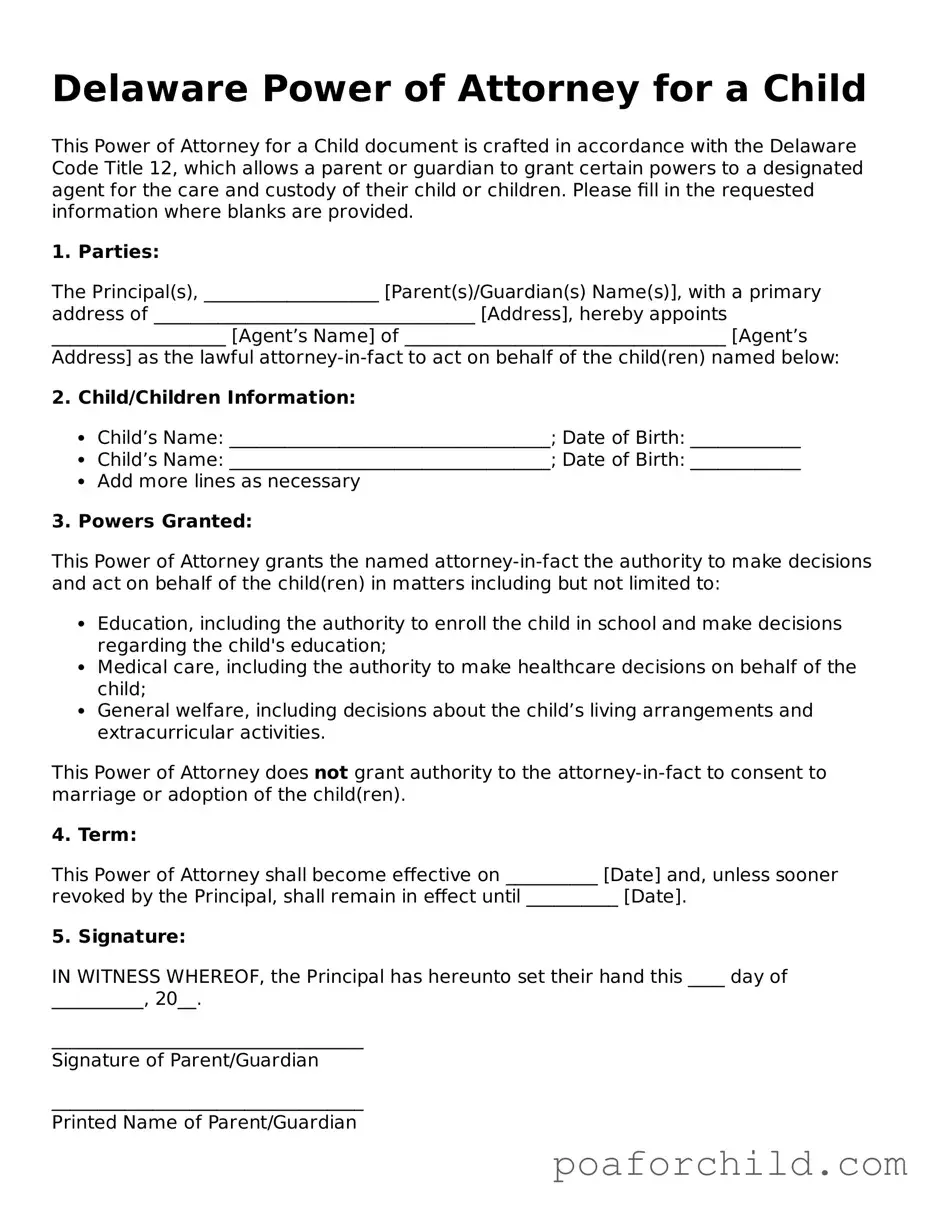Detailed Guide for Using Delaware Power of Attorney for a Child
When a child's primary caregiver needs to temporarily delegate their parenting responsibilities, the Delaware Power of Attorney for a Child form becomes a crucial document. This legal form allows a parent or guardian to grant authority to another trusted adult to make decisions regarding the child's welfare, education, and healthcare. Completing this form accurately ensures that the child's needs are met in the caregiver's absence, whether due to travel, illness, or any other reason. Let's walk through the steps required to fill out this form properly to ensure the safety and well-being of your child during such times.
- Gather all necessary information including the full legal names and addresses of the child, the parent/guardian granting the power of attorney, and the designated temporary guardian.
- Read through the form thoroughly before starting to fill it out. Take note of any sections that require additional information or documentation.
- Enter the full legal name of the child at the top of the form where indicated.
- Complete the section that identifies the parent or legal guardian. This includes your name, address, contact information, and relationship to the child.
- In the section designated for the temporary guardian, fill in their full legal name, address, and contact information. This person will be making decisions on behalf of your child, so ensure they are someone you trust implicitly.
- Specify the start and end dates for the power of attorney. Be clear about when the temporary guardian's authority begins and when it will end.
- Outline the powers being granted to the temporary guardian. This may include decisions about the child’s education, healthcare, and general welfare. Check any applicable boxes if provided and add any specific instructions or limitations in the space provided.
- Review the document for accuracy and completeness. Ensure that all information provided is correct and that no sections have been overlooked.
- Sign and date the form in the presence of a notary public. The notarization process legally authenticates your identity as the parent or legal guardian and your voluntary decision to grant power of attorney.
- Have the temporary guardian sign the form, if required. Some forms may also need the temporary guardian’s acknowledgement, signed in front of a notary public.
- Ensure that all parties have a copy of the completed form. Keep the original in a safe place, and provide copies to the temporary guardian and any relevant institutions, such as your child’s school or healthcare provider.
After completing the Delaware Power of Attorney for a Child form, rest assured that your child will continue to receive the care and support they need in your absence. This document plays a pivotal role in upholding your child's well-being, providing a trusted adult with the authority to make necessary decisions on their behalf. Remember, this arrangement is temporary, and ensuring clarity and legality in the document secures your child's interests and upholds your rights as a parent or guardian.
